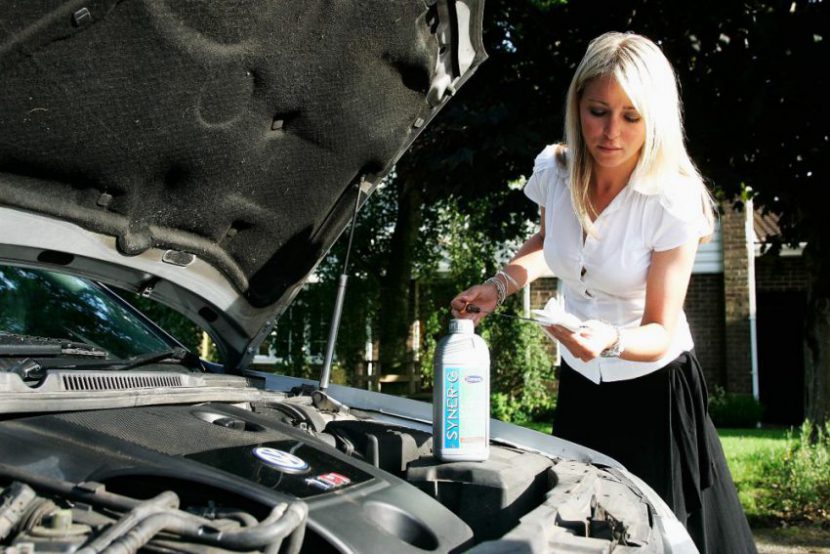
Inspect under the bonnet before going on holiday (© Comma)
Driving to your holiday destination is a brilliant way of seeing places and meeting people that you wouldn’t ordinarily come into contact with. But taking your car abroad can lay you open to trouble if you’re not fully prepared. Here Green Flag’s Sam Jackson gives seven tips for a trouble free motoring holiday.
“Usually going on holiday involves a long drive, which might mean your car is covering a month’s worth of miles in a couple of days. Then there’s the change in climate, you will be driving in different, probably warmer, temperatures than your car is used to. These factors can put critical components under stress. Ideally you will have your car serviced before you go away but at the very least you need to give it a once over.
Check your fluids
“Lift the bonnet and check that the coolant level is between the ‘min’ and ‘max’ lines and that the oil is at the correct level. If you’re unsure where to start, read the vehicle handbook or turn to the many helpful films on YouTube. Also top up the windscreen washer bottle with proper screen wash. Entire battalions of insects will come to a sticky end against your windscreen: you need to be able to clean them off without too much smearing.
Check your tyres
“Check the tyre pressures are correct. Make sure that the tread depths are legal. The law says it must be at least 1.6mm around the central circumference of the tyre. But tyre companies and independent safety experts advise tyres are replaced when they get to 3mm as stopping distance deteriorates dramatically after that.
GB plates and beam benders
“Many new cars now have a GB plate as part of their number plate. If yours doesn’t you must display a GB sticker on the boot. Driving on the right side of the road rather than the left means UK cars’ headlights will dazzle approaching drivers. To prevent this happening you need to fit ‘beam benders’, small reflective stickers which direct your headlights away from on-coming traffic. (Some modern cars change the direction of their lights at the push of a button.) Also make sure you’ve got some reflective high visibility vests. At least the driver should have one, but they’re very cheap so you might as well get them for the whole family.
Ensuring your co-driver is up to scratch
“Being a co-driver on a long drive is an important job. The co-driver is an extra pair of eyes for those confusing foreign road signs and they will have to pay motorway tolls because they’ll be sitting on the side the toll booths are on. Before you set off, ensure they have a credit card or Euros to hand.
Do the paperwork
“It’s easy to forget something so I always do a tick list for all the paperwork needed when driving abroad and store everything safely in a plastic file. UK drivers need to have both the card and paper parts of their driving licence and the original V5c registration document to prove that the car belongs to them. If it’s a company car, you’ll need a letter of authorisation from your firm’s fleet manager. You’ll also need insurance documents to show you’re covered for driving on the Continent and of course details of your breakdown cover and your travel insurance.
Know the law
“There are a whole host of obscure laws and requirements when it comes to driving abroad. And helpfully, they differ from country to country. It pays to know the law for the country you’ll be driving in. For example, in France you need a breathalyser kit. Initially the police could fine drivers for not having them. But that’s now changed so although you must have one, there’s no fine if you don’t. Weird I know, but it’ll save a whole lot of grief and arguing in a foreign language if you just have one! I’ve compiled a list of laws in the different countries here.
Rest up
“Doing a long drive can be stressful and is definitely tiring. Easier said than done, I know but drivers who are rested and have had a decent night’s sleep the night before will be less likely to make mistakes that might make your holiday memorable for all the wrong reasons.”
 Sam Jackson is Green Flag’s rescue claims operations manager
Sam Jackson is Green Flag’s rescue claims operations manager